Griqua people
The Griquas (/ˈɡriːkwə/; Afrikaans: Griekwa, often confused with !Orana, which is written as Korana or Koranna)[1] are a subgroup of mixed race heterogeneous former Khoe-speaking nations in Southern Africa with a unique origin in the early history of the Dutch Cape Colony.[2] Under apartheid, they were given a special racial classification under the broader category of "Coloured".[3] They are Cape Coloureds who participated in the Great Trek, forming "Griqua States" (the Coloured Afrikaans equivalent of "Boer States", which were White Afrikaans states formed after the Great Trek).
Griekwa | |
|---|---|
 Adam Kok III The Captain of the Griqua people | |
| Total population | |
| 775,000 Coloureds outside the Cape | |
| Regions with significant populations | |
| South Africa, Namibia | |
| Languages | |
| Afrikaans, English, IsiXhosa, Korana | |
| Religion | |
| Christian Protestant denominations, particularly Dutch Reformed Calvinist | |
| Related ethnic groups | |
| Coloureds, Khoikhoi, Basters, Oorlam, Afrikaners, Tswana, Xhosa |
Similar to the Trekboers[4][1] (another Afrikaans-speaking group of the time), they originally populated the frontiers of the nascent Cape Colony (founded in 1652). The men of their semi-nomadic society formed commando units of mounted gunmen. Like the Boers they migrated inland from the Cape and in the 19th century established several states in what are now South Africa and Namibia.
The Griquas' historical importance is highlighted by their crucial role in the formation of early trade networks and cultural interchange between different indigenous tribes and European settlers, especially helping to contribute to the emergence of a unique socio-economic system in the area.
Historians have written about the processes during which a proud, wealthy, land owning Griquas ended up amongst the poorest of South Africans(Waldman, 2007). Waldman, L. (2007). The Griqua Conundrum. Peter Lang.
According to legend, the Griqua of Campbell, in the Cape Province of South Africa, are descended from a mixed Khoi (also known as "Hottentots") population near the Cape of Good Hope, comprising different Caucasoid, Negroid, and East Asian elements. This tiny remnant on the edge of the Kalahari Desert is the result of a turbulent history of migration and deprivation. Nurse, G.T. and Jenkins, T. (1975). The Griqua of Campbell, Cape Province, South Africa. American Journal of Physical Anthropology, 43(1), pp.71–78. doi:https://doi.org/10.1002/ajpa.1330430111.
In the 1820s, Thompson estimated that there were roughly 2600 people living in the different Griqua towns at the time.24- For the latter decades, population figures are lacking, however in the 1850s, Vernon Forbes, Thompson's editor, proposed a 5,000-person Griqua population. Considering a gradual rise during politically unstable times, this seems sense. There are approximately 2000 Griqua who are supposed to have relocated to Kokstad in the 1860s.25, Although Stow estimated that only about 500 Griqua remained in the Kimberley region after the expedition, the exact number of Griqua that stayed in Griqualand West is now unknown. Nevertheless, let us suppose that it was maybe a similar amount. journals.co.za. (2009). THE GRIQUA AND THE KHOIKHOI: BIOLOGY, ETHNICITY AND THE CONSTRUCTION OF IDENTITY. [online] Available at: https://journals.co.za/doi/pdf/10.10520/AJA02590190_252 [Accessed 23 Oct. 2023].
This tribe of nomads was first brought to civilization by missionaries. After the first Adam Kok passed away and his son Cornelius took over as leader, two missionaries, Anderson and Kramer, visited these people. After accompanying them on their travels for five years, they finally convinced them to relocate to Klaarwater, which was then renamed Griquatown. Thus, the Griquas initiated the journey towards civilization. Thelma, J. and Knoll, B. (1935). THE GRI~UAS OF GHI~UALAND EAST UNTIL ABOUT 1 8 7 8. [online] Available at: https://open.uct.ac.za/server/api/core/bitstreams/6c5e1397-a98b-4089-9757-29e57db96bbe/content [Accessed 24 Oct. 2023].
Griqua was the name given to a mixed-race culture in the Cape Colony of South Africa, around the 17th and 18th century (Taylor, 2020). They were also known as Hottentots before Europeans arrived into their lands where they lived as close-knit families.[5] They are a racially and culturally mixed people[6][7] who are primarily descended from the forced sexual relations between European colonist men and primarily Khoikhoi slaves.[8] The Griquas could trace their forefathers to two clans, the Koks and Barendse, the first made up mainly of Khoikhoi and the second of mixed European descent.[9] Genetic studies of the 21st century have shown these people also had Tswana, San, and Xhosa ancestry.[8] Later, the Europeans chose mixed-race women of the Khoikhoi, who were living in the Cape during the 17th and 18th centuries.[4] As time went on, mixed-race people began to marry among themselves, establishing a distinct ethnic group[4] that tended to be more assimilated to Dutch and European ways than tribal peoples in separated villages. During apartheid, the Griqua were racially classified under the broader category of "Coloured" (Taylor, 2020). Adam Kok had a very specific stipulation after losing their land and it was that Griqualand East should not be brought under the rule of Natal although he was granted the land.[10]
Throughout the 18th century, new communities characterized by race, culture, religion, and unequal access to property and power started to form; they came to be connected by spoken word. 1.The arrival of the colonial masters denied the griqua development of their own culture. (J.B. Piers 1981). The term "Bastaards" was used to describe one of these groups of people; it referred to the descendants of marriages between Europeans, slaves, and Khoikhoi. The word was also applied to subordinate Blacks who were proficient in Dutch, could ride, and could shoot.[11] Bastaards or Basters worked on farms owned by White people in more specialized roles as craftsmen and transport riders. Later, they traveled into the interior bearing these abilities. Originally, the term "Bastaards" referred to people who were more "civilized" and religiously devoted than the Khoikhoi or slaves.[11] In the second half of the 18th centuary the Griqua could speak afrikaans, had European names and their children were baptised in a chruch.( SA history online. 13 April 2016)
The Griqua chieftain Adam Kok I was instrumental in the early 19th century negotiations with the British government that resulted in the recognition of the Griqua regions as semi-autonomous nations, highlighting their political clout and diplomatic skills during a tumultuous colonial era. [12]
Slavery was practiced in the Dutch East India Company-controlled Cape Colony, and the mixed-race groups which developed in the early Cape Colony as a result of white settler interaction with captured Khoe people who began to work around the farms, eventually opted different names for themselves, including Bastards, Basters, Korana, Oorlam or Oorlam Afrikaners, and Griqua. Like the Afrikaners, or "Boers" as they were known in that time, many of these groups migrated inland when the British took over the colonial administration.[4] The word "Afrikaner" itself was originally (for over 350 years) used as a description for not white Boers but a mixed-race bastard child. Note that the name Baster and Bastards were not derived from the English word "bastard", but rather the Dutch word meaning "hybrid". In 1870 Griqualand East was one the most fought after territories by the different surrounding tribes and this made it really hard for the British to successfully implement their colonial rule over the land.[13]
It was only around 1876 that a group of Boer intellectuals, who named themselves "The fellowship of real Afrikaners", decided to use the term as a new means to describe the Boer peoples, as part of the project to create a new national identity for pioneer Boer people during the First and Second Boer Wars and for more powerful political legitimacy.[8][14] This is why today many Afrikaans-speaking white people are still known as Afrikaners, as this message was powerfully conveyed as a national identity during the times of the South African Union (1910–1961) and the apartheid years of the Republic of South Africa.[14]
In 1888 right after the land called the Rode Valley was purchased from the Mpondo chief Umquikela the The Griquas soon became a minority in the area and soon began to sell their properties to both European settlers and Pondo farmers.[15]
By 1917 the Giqua people that were still left were in really low spirits due to the fact that they lost their independence, they soon after migrated to a place called Touws river which didn't hold up to the hopes they had and this lead to failure and not soon after they returned to Kokstad.[16]
The Griquas developed a distinctive societal structure that represented their diverse history and adaptable resilience in the face of shifting political environments as they assimilated parts of both European and indigenous traditions.[3]
According to the 18th-century Dutch historian Isaak Tirion, the Khoi name Griqua (or Grigriqua) is first recorded in 1730 in reference to a group of people living in the northeastern section of the Cape Colony.[17] In 1813, Reverend John Campbell of the London Missionary Society (LMS) used the term Griqua to describe a mixed-race group of Chariguriqua (a Cape Khoikhoi group), Bastaards, Korana, and Tswana living at the site of present-day Griekwastad (then known as Klaarwater).[18] The British found their "proud name", Bastaards, offensive, so the LMS called them Griqua. The term Bastaards refers to a group of people of mixed origin (Jody, 2021). The Bastaards did not have a legal status because of their "Mixed" blood.[19] The Griquas wanted to build a force of their own due to their constant unhappiness where they were.[20] The Khoi and San had wars that The Bastaards joined which created a good dynamic to fight with being that the bastaards were skilled in combat tactics.[21] The Griquas made a decision to flee the Dutch and made the decision t change their way of living to the way their foremothers lived.[22]
The Griquas over time created a distinctive cultural identity that combined indigenous practises, European customs, and Christian beliefs. This helped to create a society known for its adaptability and cultural diversity, which is still celebrated and preserved by Griqua communities today.[8]
An insignificant amount of Baster groups were formed in the northwestern and eastern border suburbs of Colesberg, Roggerfeld, Namaqualand, and Hantam. They had European names and were able to talk Afrikaans, and their children were baptized in churches. They were informed of commando services.[23]
The actual name was derived from the Chariaguriqua people whose princess became the wife of the first Griqua leader, Adam Kok I (Taylor, 2020). Adam Kok was a liberated slave, who figured out how to acquire burgher rights and a ranch close to the present Piketberg, established the most incredible blended local area. Because of a common ancestor named Griqua and shared links to the Chariguriqua (Grigriqua), the people officially changed their name to the Griqua.[24] Legend has it that in the 1750s, Adam Kok married the daughter of the Chariguriqua, chief of the Khoikhoi clan.[23] Kok was a former slave who managed to rule the Griqua nation and he led his people across the country, South Africa to settle next to the Orange River. He was referred to as the chief of the coloured people.[25]
Adam Kok I's father was Cornelius Jacobz who worked for the VOC and his mother was a slave. His father believed that the Cape was The Garden of Eden and this is how Adam got his name. His surname 'Kok' comes from the Dutch word 'kok' which means chef, an occupation Adam once fulfilled.

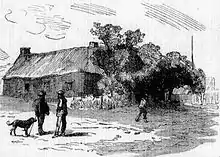
Cornelius was the son of Adam Kok III and got baptised by the missionary John Phillip in 1800. This was the beginning of Christianity amongst the Basters. The missionaries did not agree with the degrading name basters. The Griquas accepted their new name and this is how the mission town Klaarwater's name changed to Griquatown.
The Boers arrived in the area of Griquatown after Natal was taken over by the British. They acquired land from the Griqua, buying it in exchange for horses, liquor, firearms and ammunition. Trouble started when the Kok arrested a Boer accused of ill-treating his people, and the trekker community tried to take over his entire territory. A British force stationed at Colesberg quickly crossed the Orange River and defeated the Boers at Zwartkoppies.[9]
The chief's land was divided in two, one side was to keep the chief and his people busy and the other side was for the Boers who paid rent to the chief and the Cape government.[23]
The arrival of the Boers and the colonial masters to the area known as Griqualand West denied the Griquas the opportunity of following their own development paths. They lost their land and traditional resources, and were tossed into a sea of rapid social change which saw them lose the independence they had searched for in the Orange Free State area.[9] They were disheartened and had to relocate.[26]
The Dutch East India Company (VOC) did not intend for its Cape Colony possessions at the southern tip of Africa to develop into a political entity. As the colony expanded and became more successful, its leadership did not worry about its frontiers. As a result, the frontier of the colony was indeterminate and ebbed and flowed at the whim of individuals. While the VOC undoubtedly benefited from the trading and pastoral endeavours of the Trekboers, it did little to control or support them in their quest for land. The high proportion of single Dutch men led to many taking indigenous women as wives and companions, producing mixed-race children. These multiracial offspring gradually developed as a sizable population who spoke Dutch and were instrumental in developing the colony.
These children did not attain the social or legal status accorded their fathers, mostly because colonial laws recognised only Christian forms of marriage. This group became known as Basters, derived from bastaard, the Dutch word for "bastard" (or "crossbreed"). As part of the European colonists' paramilitary response to insurgent resistance from Khoi and San peoples, they conscripted Basters men into commando units. This allowed the men to become skilled in lightly armed and mounted skirmish tactics. In the winter of 1831 a Ndebele commando attacked a Griqua commando led by Gert Hooyman who intruded the Ndebele territory and stole many of their cattle. Hooyman warned the Griqua troops to be vigilant because the Ndebele might come for revenge at any time. They ignored him and on this night the Ndebele attacked the Griquas while they were still feasting on their stolen cattle. Around 1000 Griqua men were killed on the now famous hill called Moordkop.[27] But many recruited to war chose to abandon Dutch society and strike out to pursue a way of life more in keeping with their maternal culture. The resulting stream of disgruntled Dutch-speaking marksmen leaving the Cape hobbled the primarily Dutch colonists' ability to crew commando units. It also created belligerent, skilled groups of opportunists who harassed indigenous populations along the Orange River. Once free of colonial rule, these groups referred to themselves as Oorlam. In particular, the group led by Klaas Afrikaner became notorious for its exploits. They attracted enough attention from the Dutch authorities that Afrikaner was eventually rendered to the colony and banished to Robben Island in 1761.[28]
Hemmy Gysbert in his Latin oration delivered to the Hamburg Academy on 10 April 1767 describes the Hottentots thus, This race of men has a good physique, is swift of foot, and averse to hard labour: the majority of them succumb to old age, except those who fall victim to weapons or wild beasts. In colour they are dark rather than black. They are tall and thin, yet so powerful they can withstand the charge of an ox in full career. Their eyes are beautiful but watery, their noses flattened, their breath foul-smelling. Their teeth are ivory white. Their fingers are equipped with little talons, like the claws of eagles. They have graceful ankles and small feet. Their hair is like wool and adorned with pendants or coral' and numerous types of trinkets, made of lead, copper or brass. The great majority of them go about naked or wearing sheepskins they call "Krossen", and which they wear instead of clothing, their private parts they cover with a loin cloth, known as the Kul-Kross. The woman have pendulous breasts, which they can throw over their shoulders and offer to their babies. The chief ornaments of the women are in the form of beads. To protect themselves against the heat of the sun they anoint their faces and bodies with an unguent made of animal fat, butter and soot. Some of them live off the raw flesh of animals, the rest eat it half-cooked, dragging the flesh through their teeth.
Three years ago, the Griqua made calls to be recognized as the countries first people and for their language to be preserved, grown and taught. (A brief history of the Griqua demanding recognition. [29]
Griqua migrations
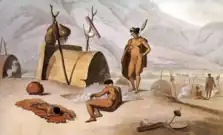
The Griquas settled on the outskirts of the Cape Colony, since they were neither European or African. They formed their own communities and spoke Afrikaans. The Griqua surnames were predominantly Afrikaans and are still common in the coloured community today. Many of the Griqua men enlisted to do commando service. However, the Griquas were constantly being removed off their land as the Europeans took preference over them. This caused the Griquas to move away from the Cape colony in search of their own land. This migration was in two main groups the Kok and Barends families.

One of the most influential of these Griqua groups was the Oorlam. In the 19th century, the Griqua controlled several political entities which were governed by Kapteins (Dutch for "Captain") and their councils, with their own written constitutions.[30] The first Griqua Kaptein was Adam Kok I, a former slave who had bought his own freedom. Kok led his people north from the interior of the Cape Colony, likely to escape discrimination, before moving north again. As Voortrekker moved North to Natal and finding out the Natal was under British control, they had remembered the good lands they had passed through so they moved back over the Drankensberg [O'Connel, 2013].
He eventually led them beyond the Cape Colony, near the Orange River just west and south of what would eventually become the Boer Republics of the Orange Free State and Transvaal, respectively.[31] This area is where most of the tribe settled, although some remained nomadic. Prior to beginning their migrations, the Griqua had largely adopted what would be known as the Afrikaans language.
Adam Kok, head of the Griquas at Nomansland, on the demand of the teacher John Campbell, concocted the name Griqua. They set up a fundamental arrangement of government dependent on pioneers known as kaptyns and officers drawn from the main families. However, Kok had a rival known as Nicholas Waterboer, he ruled the farthest west of Kimberley. He was no threat to Kok until diamonds were discovered there.[32] Kok's successor, Andries Waterboer, founded Griqualand West, and controlled it until the influx of European after the discovery of diamonds. In 1834, the Cape Colony recognised Waterboer's rights to his land and people. It signed a treaty with him to ensure payment by Europeans for the use of the land for mining.
Another important founding father of the Griquas was Barend Barends. He led a group of Griquas to fight against Mzilikazi at Moordkop in the North West Province. The battle led to the deaths of many griquas. Barends was no match for Milikazi and many of the Griqua soldiers died during this battle. Trudie (Barends Granddaughter) was captured by Milikazi and forced to join Milikazi as his harem. It is rumoured that she was later rescued by a missionary, Robert Moffet. It is believed that Griqua blood runs through the Ndebele people from the children that Trudie bore during her years with Milikazi.
Current situation
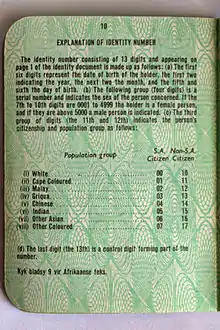
Despite similarly mixed-race origins, those Coloured peoples identifying as Basters are considered to be a separate ethnic group and live primarily in south-central Namibia, while those who consider themselves Griqua are mostly located around Campbell and Griquatown in the historic territory of Griqualand West in the Northern Cape; around the small Le Fleur Griqua settlement at Kranshoek in the Western Cape; and at Kokstad in KwaZulu-Natal. It is important to note that the Griqua nation, largely founded on the Khoikhoi, were pastoral people who lived a laid-back life at one with nature and their surroundings.[33]
Due primarily to the racial policies of South Africa during the apartheid era, many Griqua people accepted classification in the larger "Coloured" group for fear that their Griqua roots might place them at a lower level than other groups. As a result, estimates of the size of the Griqua population are difficult to determine and remain largely unknown. During apartheid, the Griqua were further marginalized when they were not given "Griquastans" or special territorial reserves.[34]
Genetic evidence indicates that the majority of the present-day Griqua population is descended from a combination of European, Khoikhoi and Tswana ancestors, with a small percentage of San, or Bushmen, ancestry.[35] Griqua historians in South Africa and Namibia are digging into their past and telling their stories.[36]
In 1999, the National Khoi-San Council (NKC) was established and facilitated discussions between these indigenous people and the South African Government. They discussed and collaborated on many issues concerning the Khoi-San people.[37] Griqua people are represented by the National Khoisan Consultative Conference (Afrikaans: Nasionale Khoe-San Oorlegplegende Konferensie), which was established in Oudtshoorn in 2001 to represent the interests of South Africa's Khoisanid peoples. The conference participates in cooperative research and development projects with the provincial government of the Western Cape and the University of the Free State in Bloemfontein. Members of the influential Le Fleur clan of Griqua are especially represented in this body.
The Griqua established their own church, known as the Griqua Church, which is Protestant. The Church has a strong focus on maintaining Griqua cultural and ethnic identity. They are represented mostly in South Central Namibia.[38] The church was the first church to be established in South Africa in 1920.[39]
One of several disputed theories as to the origin of Bloemfontein's name connects it to the Griqua leader Jan Bloem (1775–1858). However, this may be a coincidence as Bloemfontein is Dutch for "fountain of flowers", or "blooming fountain", and the area could have been named for its local vegetation.
The Griquas started a campaign in 1994 to bring back the remains of Saartjie Baartman from France. The GNC (Griqua National Conference) wanted to see the original identity of the Griqua nation restored. Saartjie was a member of the Khoekhoe people. She was a slave who was taken to Europe to be viewed by people who paid to do so. The Griquas wanted to honour their Khoi forefathers by at least being able to bury her body in her homeland.
Griqualand
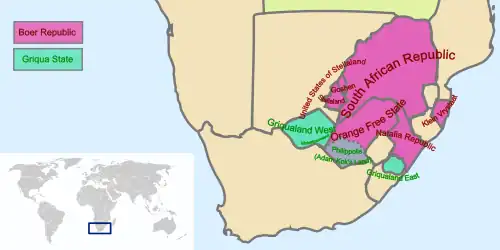
Several areas of South Africa became known as 'Griqualand' when the group migrated inland from the Cape and established separate communities. The Griqua were the first from the Cape to make their way to and remain in the Transorangia area, beyond the Orange River.[40] Some Griqua raided the Tlhaping, a Tswana speaking community, while others obtained cattle from them which was used to trade with the Cape farmers for firearms, horses, and wagons.[41]
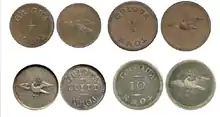
_Museum._01.jpg.webp)
_Museum._03.jpg.webp)
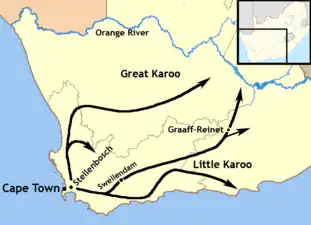
Griqualand East, officially known as New Griqualand was one of four short-lived Griqua states in Southern Africa from the early 1860s until the late 1870s and was located between the Umzimkulu and Kinira Rivers, south of the Sotho Kingdom.Is the area around Kokstad founded by Adam Kok, on KwaZulu-Natal's frontier with the Eastern Cape. Kokstad situated in die shadow of Mount Currie named after Sir Walter Currie on the outer slopes of the Drakensberg, encircled by mountains in a area mostly known for stock farming. The town is famous for its many rivers and dams, where people can go fishing for trout. Its founder Adam Kok III died discreetly when he fell of his wagon December, 30 1875, near Mzimkulu Cape Colony, today a monument can be found next to the police station in honor of his leadership.[42][43] It was a historical division in the Eastern Cape province approximately 19000 km2. This area was named after Adam Kok III. In 1861–1862, Kok III led more than 2,000 Griqua through Basutoland over the Drakensberg mountains. They settled on a piece of unclaimed territory between Pondoland and Natal which subsequently became known as Griqualand East. The region remained independent for a few years before the territory was annexed by Britain.[44] Griqua descendants are now largely concentrated in Kokstad, where the Griqua Church is a center of the community.
Griqualand West is the area around Kimberley, which became an important mining town in the decades following the first local discovery of diamonds in 1866. Kimberley is also known for its sports teams, including the Griquas rugby team, which competes in South Africa's annual Currie Cup tournament and contests its home matches at Griqua Park. With the arrival of the Boers to Griqualand West, the Griqua lost their land and traditional cultures and were tossed into a rapidly changing Orange Free State area [South Africa History Online, 2020].
The Griqua nation - Map indicating Griqualand West is known to have made use of flags before 1902 when they adopted a flag similar to the Zuid Afrikaansche Republiek (ZAR). Griquas living in this area were under the leadership of Anndries but they are not known to have used flags. Griqualand is called Griekwastad today.
Griqua people
- Adam Kok III
- Adam Kok I[45]
- Barend Barends[46]
- Andries Waterboer
- Andries Le Fleur[47]
See also
References
- Landau, Paul S. (2010). "Mixed People (The Samuelites, the Griqua, and other subjectivities, 1880–1928)". Popular Politics in the History of South Africa, 1400–1948. Cambridge: Cambridge University Press. pp. 162–213. doi:10.1017/cbo9780511750984.006. ISBN 978-0-511-75098-4.
- "Griqua | South African History Online". www.sahistory.org.za. Retrieved 30 May 2020. Text was copied from this source, which is available under a Creative Commons license.
- Waldman, Linda (2 December 2006). "Klaar Gesnap As Kleurling:1 The Attempted Making and Remaking of the Griqua People". African Studies. 65 (2): 175–200. doi:10.1080/00020180601035633. S2CID 144687031.
- Edward Cavanagh (2012). "Appendix: The Griqua in History After 1994: A Bibliographical Note 111". The Griqua Past and the Limits of South African History, 1902-1994. Peter Lang. doi:10.3726/978-3-0353-0189-2/9. ISBN 978-3-0343-0778-9.
- Thomas, S. (n.d). Modern History or the Present State of All Nations, Describing Their Respective Situations, Persons, Habits and Buildings, Manners, Laws and Customs, Plants, Animals and Minerals. TokenCoins. [Online] Available at: http://www.tokencoins.com/griqua.html#birth [Accessed 28 October 2020]
- Commonwealth, Journal (7 April 2020). "Griqua". Commonwealth. doi:10.15367/com.v0i0. ISSN 2469-7672.
- https://www.pressreader.com/south-africa/getaway-south-africa/20200101/281621012226205Pressreader.com, Getaway. "The Longest Trek". Retrieved 29 October 2020 – via PressReader.
- "Griqua People of South Africa and Namibia". Alkebulan Movement. 8 October 2017. Retrieved 29 October 2020.
- "Griqua People.-Introduction". SAHO South African History Online. 13 April 2016.
- "Griqua | South African History Online". www.sahistory.org.za. Retrieved 26 October 2023.
- South African History Online (2016). "Griqua".
- "Griqua | South African History Online". www.sahistory.org.za. Retrieved 25 October 2023.
- "Griqua | South African History Online". www.sahistory.org.za. Retrieved 26 October 2023.
- Hussein, V. (8 October 2017). "Griqua people of South Africa". WordPress.com.
- "Griqua | South African History Online". www.sahistory.org.za. Retrieved 26 October 2023.
- "Griqua | South African History Online". www.sahistory.org.za. Retrieved 26 October 2023.
- Landkaart Kaap de Goede Hoop[Usurped!]
- "Griekwastad". Archived from the original on 14 August 2007. Retrieved 20 April 2006.
- Queen, C. 2018. Mixed history: The story of the Griquas. [Online] Available at:https://www.youtube.com/watch?v=h_ppd7_eGWs
- Queen, C. 2018. Mixed history: The story of the Griquas. [Online] Available at:https://www.youtube.com/watch?v=h_ppd7_eGWs
- Queen, C. 2018. Mixed history: The story of the Griquas. [Online] Available at:https://www.youtube.com/watch?v=h_ppd7_eGWs
- Queen, C. 2018. Mixed history: The story of the Griquas. [Online] Available at:https://www.youtube.com/watch?v=h_ppd7_eGWs
- "Griqua". Griqua. South Africa History Online Board members. Retrieved 21 March 2023.
- Monica Wilson and Leonard Thompson, The Oxford History of South Africa: Volume I (Oxford: Clarendon Press, 1969); 70.
- "Griqualand East | historical region, South Africa | Britannica". www.britannica.com. Retrieved 23 April 2023.
- "Griqua | South African History Online". www.sahistory.org.za. Retrieved 23 April 2023.
- Smillie, Shaun (29 October 2019). "The lost history of the Griqua: New Frame". New Frame. Retrieved 20 April 2023.
- Nigel Penn. 2005. The Forgotten Frontier. ISBN 0-8214-1682-0.
- by Mildred Taylor. January 28 2021. available at https://face2faceafrica.com/article/a-brief-history-of-the-griqua-demanding-recognition-as-first-south-africans)
- Jeroen G. Zandberg. 2005. Rehoboth Griqua Atlas. ISBN 90-808768-2-8.
- Christopher Saunders, Historical Dictionary of South Africa (London: The Scarecrow Press, 1983); 74.
- The Editors of Encyclopaedia Britannica. 2017. Griqua. Encyclopædia Britannica. [Online] Available at: https://www.britannica.com/topic/Griqua [Accessed 29 October 2020].
- History of the Griqua Nation and Nomandsland|http://www.tokencoins.com/griqua.html accessed 21 April 2023
- The lost history of the Griqua|https://www.newframe.com/the-lost-history-of-the-griqua/ Accessed 22 April 2023
- Alan G. Morris. 1997. "The Griqua and the Khoikhoi: Biology, Ethnicity and the Construction of Identity", in: Kronos Journal of Cape History, No. 24, page 106 – 118
- The lost history of the Griqua|https://www.newframe.com/the-lost-history-of-the-griqua/ Accessed 22 April 2023
- South African Human Rights Commission. 2019. South African government will engage with the National Khoisan Council. [Online] Available at: https://www.sahrc.org.za/index.php/sahrc-media/news/item/1721-south-african-government-will-engage-with-national-khoisan-council [Accessed 29 October 2020].
- "Little Known Black History Fact: Griqua People of South Africa". blackamericaweb.com. 24 July 2012.
- "Servant of God: The early years of The Reformer - Andrew Abraham Stockenström le Fleur" (PDF). rohobothbasters.org. 2003.
- "Griqua | South African History Online". www.sahistory.org.za. Retrieved 18 April 2021.
- South African History Online https://www.sahistory.org.za/article/griqua#:~:text=The%20Griquas%20were%20the%20first,firearms%2C%20horses%20and%20wagons%2C Accessed 20 April 2023.
- Marais, Shante-Leze'. "Adam Kok III". Brittannica.
- Marais, Shante-Leze'. "Kokstad". South African History Online. Retrieved 28 November 2019.
- André Burgers, 2004
- "Kokstad's Origins". www.tokencoins.com. Retrieved 2 November 2020.
- Smillie, Shaun (29 October 2019). "The lost history of the Griqua". New Frame. Retrieved 29 October 2019.
- "Griqua leader Andries le Fleur is born". SAHO.
- Barends, Barend (2019). die vergete kaptein van Danielskuil. Paternoster Books. p. 96. ISBN 978-0-620-84718-6.
Camissa Museum a Camissa African centre for restorative memory Adam Kok I (circa 1710 - 1795) https://camissamuseum.co.za/index.php/7-tributaries/3-free-blacks-of-the-cape/adam-kok- Author not stated 2021 - 2023 Camissa museum |access-date=22 April 2023}}</ref>
Khoemana and the Griqua: Identity at the Heart of Phonological Attrition. https://core.ac.uk/download/pdf/146448391.pdf Killian Don March 2009 CORE The University of Helsinki 22 April 2023.
The Griqua and the Khoikhoi: Biology, Ethnicity, and the Construction of Identity. https://journals.co.za/doi/pdf/10.10520/AJA02590190_252 Alan G. Morris 1997 University of Cape Town 22 April 2023
The Kok family and the longest trek in South Africa. https://www.dailymaverick.co.za/article/2021-04-21-the-kok-family-and-the-longest-trek-in-south-africa/ Don Pinnock April 2021 ANCIENT JOURNEYS DAILY MAVERICK 22 April 2023
External links
- "Children of the Mist – the lost tribe of South Africa"
- Kokstad with historical Griqua images*
- Kranshoek – meeting with Griqua Paramount Chief le Fleur
- Griquatown and Campbell with historical Griqua images
- Griquatown – 1812 and today
- History of the Rehoboth Basters and the Griqua in Maps and Pictures Archived 4 January 2012 at the Wayback Machine
- Smillie, Shaun (29 October 2019). "The lost history of the Griqua". New Frame. Retrieved 10 October 2021.
- https://www.sahistory.org.za/article/griqua
- http://www.griquas.com/gr01.htm